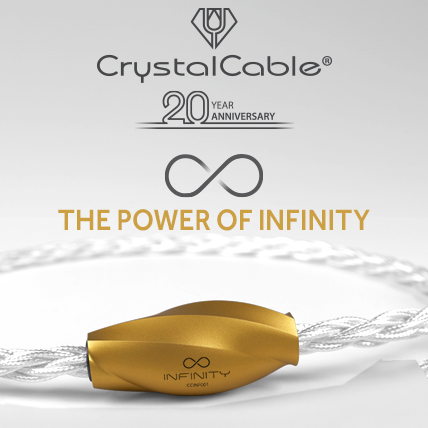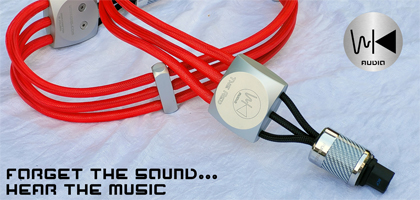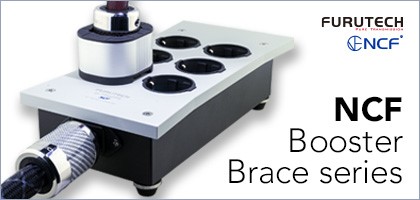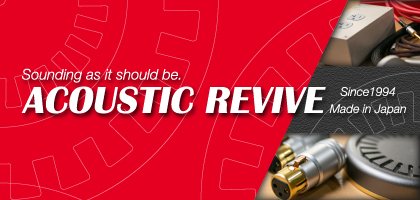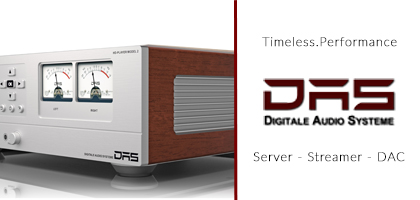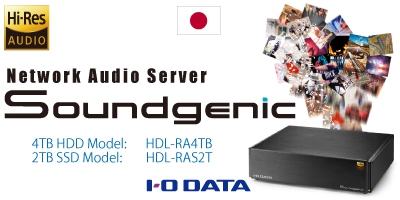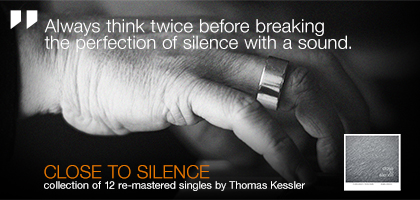 Contents
Contents
No. 248 January 2025
- COVER REVIEW: Gigawatt POWERMASTER 25 ANNIVERSARY EDITION ⸜ AC power conditioner » POLAND
- KRAKOW SONIC SOCIETY № 149: High Fidelity Presents: ART FARMER: Art Farmer in Wrocław » POLAND/Krakow
- REVIEW: Audio Phonique DESIRE SP ⸜ speaker cables » POLAND
- REVIEW: Avatar Audio DREAMLINK № 1 ⸜ analog interconnect • RCA » POLAND
- REVIEW: DS Audio MASTER 3 ⸜ optical cartridge + phono stage » JAPAN
- REVIEW: Laiv HP2A ⸜ preamplifier/headphone amplifier » SINGAPORE
- REVIEW: TiGLON TPL-2000L Professional ⸜ LAN cable » JAPAN

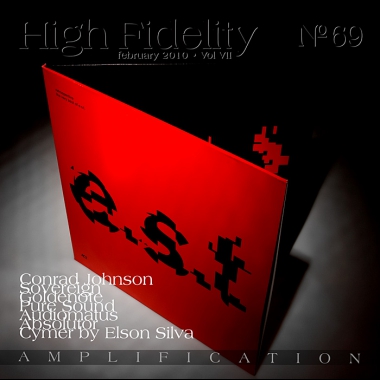
|
BOOK OF WISHES

According to “Gazeta Wyborcza”, the Avatar movie from James Cameron earned 230 billion dollars in the opening weekend (Witajcie na planecie 3D, P. Cieśliński, „Gazeta Wyborcza”, 28 Dec 2009, p. 13). And this should not be surprising – it is a breakthrough in many categories. The 3D technology, in which it was made, is nothing extraordinary for the cinema, as it is known since the 50-ties. But after having watched the newest film from the maker of the Titanic I know, that those were only first tries to real three-dimensionality. Avatar ties us to the seat – when, after 160 minutes, it ended, I took a breath as if I would be on a single breath during the whole movie. The impression of taking part in that what is happening in front of us (not “on the screen” in this case) was so immense, that after leaving the IMAX (the only place worth to go watching the film) I thought, that the real world around me was so gray, flat and hopeless. Yes, me too, I wanted to become an Avatar… I think, that in this case, technology finally allowed the director to reproduce exactly that, what he wanted to show us. It is strange, but after this film it can be seen, that the cinema, in terms of technology, matured only recently. One has the impression, that all other films seen before, even those recent ones, like Transformers. Revenge of the fallen (Michael Bay, 2009) or 2012 (Roland Emerich, 2009), just to stay with SF, are only a shadow of what they could have been, if Cameron would film them in 3D. And we thought, that a cinema picture is almost perfect, that after introduction of 2K and 4K digital projectors, we have everything we could dream of. Now I know, that this was not true. 
I write about that on purpose, because clearer than ever before it can be seen, that there is a parallel between the video and audio world, a parallel, which is not symmetrical. If we would compare that, what happened with picture and sound, then we could draw the following parallels, at least according to me: black & white picture – mono sound; color picture – stereo sound; color 3D picture – surround sound (multichannel). I think, that this is the logic of change – from the simplest presentation to the most complex one. But this does not automatically mean, that newer is better – let us just remind the incredible Citizen Kane (Orson Welles, 1941) and the monophonic recordings from Saxophone Colossus (1956) Rollins, to know, what I am talking about. But, from the point of view of reaching the most true reproduction of that what is in reality, then the color picture is closer to it, than the black & white one – the 3D closer than the flat one. And in sound we have the same thing – the surround sound is closer to what we really hear, than stereo or mono sound. But the problem is, that – at least until now – the 3D movies, and the surround sound, were rather bad, and the viewer/listener perceived them as artificial, untrue. The problem was on the side of new technologies, and the reason I prefer mono and stereo recordings to the surround ones, and classic, well made movie to the 3D one, was due to the immaturity of the new technologies, and not the assets of the “flat world”. However in audio, it is still the case, that even a very good multichannel system loses ground to a hi-end stereo. There are exceptions, but those were mostly experimental demonstrations, like the IsoMike Kimber system and those are very hard to be transferred home. This is why, in my, and only my opinion, but supported by many years of experience and many attended demonstrations, surround systems reproduce reality worse than stereo systems. Yes, the spatial aspect of the first may be incredible, yet – I think – they lose timbre and definition of the sounds. And probably not much will change in that aspects. But when we talks about cinema, then I am sure, it enters in a new era, the 3D era. That, what Cameron prepares is an incredible leap forward, and we will be talking about movies before and after Avatar. In audio there is no such turning point, and there will be none soon (if at all). In the branch “High Fidelity” is in, the multichannel revolution has yet to find his Cameron. 
But we are on a verge of another change – as the analytics company NPD Group states, sales of music in the form of digital files will overtake that on physical carriers in 2010. Although this data comes from the American market, those will translate into European ones within a year. We can read in the statement, that the companies gain 65% of their earnings from CD sales, what means, that the files account for 35% of it. The leader of that market is the company Apple, which gained 25% of the market, while not selling any music on physical carriers at all. And nobody publishes data on downloading files, but just about their sales. But it is known, that this is only a fraction of that, what changes ownership in Internet. Because the nest revolution in audio will happen in the way music is distributed and in the way it will be played back. In a way we will remain on the level of 2D color television, but – finally – a HD one. Because it is the first time we get our hands on material, that is a copy of the master tape, I’ll just mention, that the Munich based company ECM started to publish their catalog in that quality, and their hit is the Testament Keith Jarett in the form of FLAC 24/96. 
Yes, I think, that this will be the only significant change in audio this year. All other element of the chain, like amplification and loudspeakers, will remain the same as they were. And this – let us be frank – is a sign, that the branch is weak, and technology in general. Because although sound achieved by dynamic loudspeakers can be brilliant, it is still prone to large distortion and problems related to, for example, room interaction. There are attempts to circumvent that, taken by, amongst others, manufacturers of electrostatic loudspeakers, or those, who manufacture room acoustics correction gear, but for me, those are a step sideways, and do not resolve problems, only changing some of them to different ones. Also not much will change in the area of amplification. But here things are not so bad. The renaissance of the tube pushed solid state gear manufacturers to search for solutions, which would allow them to get rid of the most annoying distortion inherent to that technology. Many of those manufacturers succeeded in achieving just that, and products from companies like Tenor Audio, Sovereign, Accuphase, Luxman, Goldmund, Spectral, FM Acoustics show, that they can sound in a beautiful way. And yet… Still the best sound I heard came from tube amplifiers. But the difference was not so big, not so unanimous, as it was two or three years ago. We could ask, what happened with digital amplifiers and class D ones (those name cannot be interchanged). I think, that the market for those devices will grow, especially after the European Union will impose high charges on manufacturers of classic, class AB and A, amplifiers (and this will happen, for sure). But those new technologies are still very early in their development, and still have a long way to go – long enough, that those will only be an “extra”, and not mainstream, at least in the coming year. Reference system Change is something natural, but the audio world is incredibly opposed to changes. Its conservatism comes not only from the habits of its users, but also from the lack of real novelties, real breakthroughs. We still do not have our Avatar… Despite that we are slowly moving forward, I am sure about that. My point of view also changes, and my reference system. Those are no big changes, rather small moves in the chosen direction, but I need to mention them, because they do influence the way tested equipment is perceived by me. So I will try to describe shortly those changes, and the way those influenced the system as a whole – not because I need to do that, but because I want you to know, what I am referring to. The biggest change was made in December, and I am still getting acquainted to it, and it was the exchange of the preamplifier. My beloved Leben RS-28CX went to a new owner and was replaced by the Ayon Audio Polaris II, which I described some time ago (HERE). But this is not the same device. Mr Gerhard Hirt was kind enough, to prepare a special version for me, a line preamplifier, with an output for a headphone amp – and about that in a moment – and a completely new power supply, named AC-Regenerator. This is something similar to the PS-510 from Accuphase, which generates completely new voltage. But in contrast to the Japanese conditioner, the Ayon generates the voltages required by the preamplifier – anode and heating voltages, and not 230V, where the required voltages are generated from in a power supply. The preamplifier is plain brilliant, but I am still getting used to it, and try to understand it. |
The second change happened to my CD player, the Lektor Prime Ancient Audio. It served me well, but has found a new home, and I ordered a new one by Mr. Waszczyszyn. Yes, I ordered one, because there wasn’t – the new CD will be a prototype. Prime was a fantastic device, but expensive players, like the Grand SE from that manufacturer, but also many more, were better. It would have been easiest to switch to the mentioned Lektor Grand SE, but that solution was not acceptable for me due to its three box setup – testing so many different units I need to have something sleek and mobile, what can be unplugged and plugged into a system relatively easily. Hence came the idea of Lektor Prime SE (or whatever it would be called). The enclosure remains the same as in the Prime, but inside it will be a completely new unit – a new PCB, big oil V-cap capacitors on the output, a new clock, two transformers in the power supply, etc. The first listening tests are very promising, but there are still problems in getting everything to work inside the enclosure. This is the reason, that for two months I listen almost exclusively to vinyl. And this will surely leave a deep trace in my perception of music… 
And finally the headphones – here were even more changes. After having tested the HD800 Sennheiser, I made for “Audio” I could not let them go and bought them. I still love my AKG K701 for their softness, velvetiness, etc, but the HD800 top everything, that has been done with dynamic headphones to date. To provide them with a worthy amplification, I ordered a special version of the Leben CS-300 from Mr. Taku Hyodo, the owner and main designer of Leben. So I received, the CS-300XS custom version, with selected elements and very rare Toshiba output tubes. The output power is now 8W instead of the usual 16W. And on the back plate there is a signature of the designer and a special plaque regarding “High Fidelity”. Yes, I brag a little, but there is something to brag with… The loudspeakers are waiting for their turn to be changed, but I have a problem with that – I would like to have the Hansen Prince, but I cannot afford them. And below that level it is hard to propose something, that would be so unambiguously and undisputedly better than my Dobermann. Of course within the aesthetics I prefer, and which is helpful in testing – my system is some kind of a ‘lab’. It has to sound well, but it also has to be very linear and transparent. This is actually the sound I have now. It is not so saturated as the system Reimyo, or with the mentioned Hansen. But it is quicker and more precise. One thing for another. There were amplifiers, that sounded better than my Luxman M-800A, like the Reimyo PAT-777 or Ancient Audio Silver Grand Mono, but those were not practical in terms of testing different speakers. The Dobermann sounded divine with them, but they are an easy load, with a flat and high impedance. With other loudspeakers, those amplifiers were easily choked. Brilliant was also the ASR Emitter II (HERE), but, like I wrote, this is not fully “my sound”. As you can see, a reviewer has to make many choices, and has to work out compromise between functionality and quality of the sound. But that’s life. You do not have to have it like that, because you do not need to have good cooperation with other products. I promise to test all those devices in such a way, that you will have the idea, about what I am talking about, comparing devices to my reference system. But first I need to get acquainted with the new sound, test some better products, to know all about them. 
Plans for 2010 I have already four planned issues of “High Fidelity” for 2010. I decided to make more monographic issues this year. The first one of them, the January edition, devoted to amplification, you can read now. The February issue, as you can see after clicking on the cover (the “Next issue” button at the end of the editorial) will talk about digital sources – there will be file players, like the Linn Klimax DS and the (absolute novelty) Bladelius Embla and the D/A USB converter Wavelenght Crimson v3. On the CD side we will have a contestant from Canada, the Simaudio Moon and a further novelty, an inexpensive player from Ayon Audio, the CD-07. It is interesting mostly because it has an integrated iPod socket, and that in a very tricky way – please have a look at the Polish Ayon page. And from Katowice I received already the inexpensive DAC C.E.C. DA53N, or actually a DAC/preamplifier/headphone amp. This is a device very similar to the Benchmark DAC-1 USB, in terms of functionality, which we tested some time ago. And something else, but I do not know yet for 100% what… Because planning the tests is in Poland quite a challenge – usually the products are desired, and small companies have only single units at their disposal. Not once and not twice (frankly speaking quite often) it turns out, that I have something planned, I have time allocated to test a certain device, and at the day I should have received it, I receive a phone call from the distributor, saying “Sorry, we just sold the unit…”. This destroys the plan of the test completely, I need to find replacement quickly, etc. But on the other hand I understand the distributor’s standpoint – they are here to sell things, and promotion, building the name of the brand, are secondary things. But it works havoc to the plans… And then there are some more prosaic problems, like things getting damaged in transport, me not accepting the sound (I test only things, that are good and worth showing them, everything else I do not care about that), etc. There is always something. This is why all the plans can sometimes go to hell. But I would like you to know – more or less – what you can expect of “High Fidelity” this year. I would like to see it as follows: This are of course only plans. As a known saying states, God is laughing at our plans more, than about anything else, so we will see what will come true about those… HIGH END 2010 
The organizer of the High End show informed about the dates for this year’s show: „High Fidelity” in Wikipedii |
About Us |
We cooperate |
Patrons |
|
Our reviewers regularly contribute to “Enjoy the Music.com”, “Positive-Feedback.com”, “HiFiStatement.net” and “Hi-Fi Choice & Home Cinema. Edycja Polska” . "High Fidelity" is a monthly magazine dedicated to high quality sound. It has been published since May 1st, 2004. Up until October 2008, the magazine was called "High Fidelity OnLine", but since November 2008 it has been registered under the new title. "High Fidelity" is an online magazine, i.e. it is only published on the web. For the last few years it has been published both in Polish and in English. Thanks to our English section, the magazine has now a worldwide reach - statistics show that we have readers from almost every country in the world. Once a year, we prepare a printed edition of one of reviews published online. This unique, limited collector's edition is given to the visitors of the Audio Show in Warsaw, Poland, held in November of each year. For years, "High Fidelity" has been cooperating with other audio magazines, including “Enjoy the Music.com” and “Positive-Feedback.com” in the U.S. and “HiFiStatement.net” in Germany. Our reviews have also been published by “6moons.com”. You can contact any of our contributors by clicking his email address on our CONTACT page. |
 



|
   |
main page | archive | contact | kts
© 2009 HighFidelity, design by PikselStudio,
projektowanie stron www: Indecity
